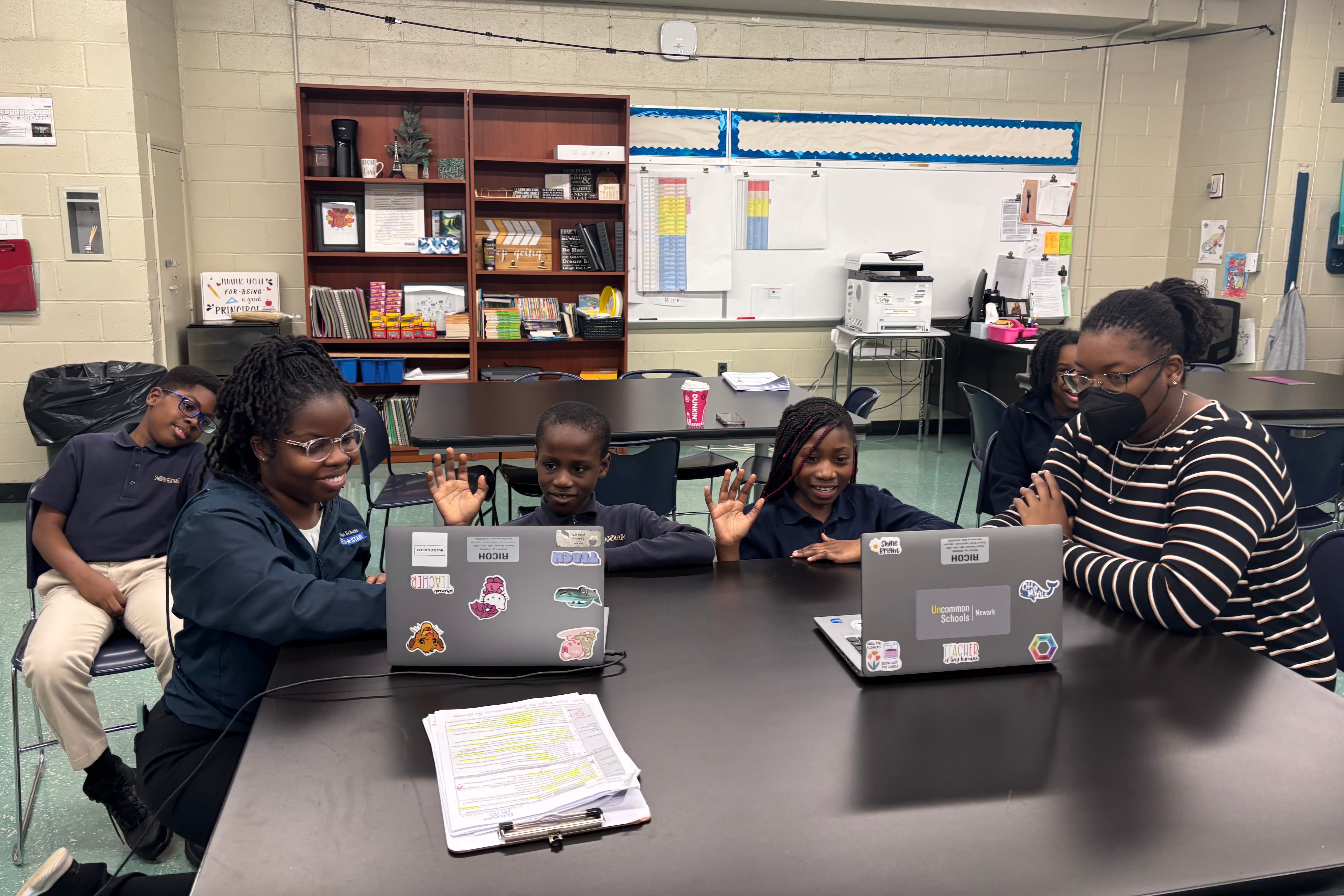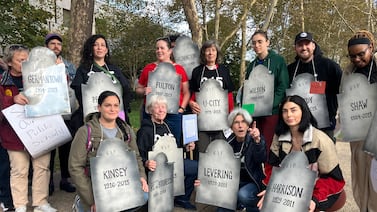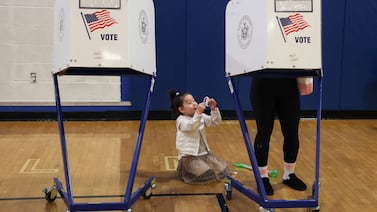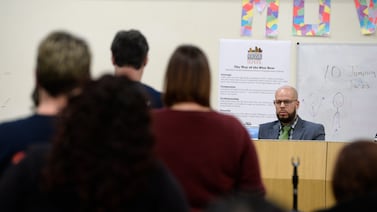Sign up for Chalkbeat Newark’s free newsletter to get the latest news about the city’s public school system delivered to your inbox.
As a student, Nia Freeman was highly involved in school — whether it was varsity sports, honor societies, or the morning announcements broadcasting crew.
As a teacher, Freeman applies the same level of school spirit. She’s the co-chair of the diversity, equity, and inclusion committee, and spearheads a monthly student-led newscast, all while studying for her master’s degree.
Freeman, a third grade teacher at North Star Academy’s Liberty Elementary School, draws inspiration from her educational experience to create similar positive learning environments for her students in Newark, more than 800 miles from where she grew up in Atlanta.
Teaching at Liberty Elementary, Freeman said, is reminiscent of the schools she went to as a kid “where almost all of the teachers and students looked like me.”
“I never felt othered as a darker-skinned, Black American and Caribbean girl,” Freeman said. She added that “it brings me joy” to now teach in “classrooms full of Black and brown kids, similar to the ones that I grew up in.”
Her role as diversity, equity, and inclusion committee co-chair, she said, is “about advocating for everyone to feel seen and heard, teachers and students alike.”
With the support of her school principal, Freeman guided the start of a student-led newscast using Zoom that airs across her school and focuses on sharing information about various cultures and identities. She drew some inspiration from her time doing news broadcasting in elementary school.
“I feel responsible for providing everyone in our school with ‘mirrors’ and ‘windows,’” meaning that “everyone should have a chance to see their reflection and feel represented and seen,” she said. “But they should also have an opportunity to look out at other cultures and circumstances and better understand those who are different from them.”
Now in her fifth year of teaching, Freeman is studying to obtain a master’s in social work. Freeman spoke with Chalkbeat Newark about her teaching journey, how she engages students on DEI topics through delivering the news, and more.
This interview has been edited for length and clarity.
How and when did you decide to become a teacher?
Going into undergrad, I knew that I wanted to go into a helping field, but I wasn’t sure which discipline would best fit me. I just knew that I was passionate about working with children and supporting communities of Black and brown kids, but I was hesitant about education. I ended up studying human development and family science. I started to take classes about children and schools, and I also began volunteering at an after-school program as a mentor. By my senior year of college, I was an executive director of that same after-school program and the family engagement intern at the elementary school that many of my students attended. I had also interned in North Star Academy schools through the Uncommon Schools Summer Teaching Fellowship. These experiences made it clear to me that I belonged working in schools! I then decided to become a teacher, with the goal of eventually pursuing school social work.
What was your experience with school, and how does it inform your teaching?
I was a very involved student. In elementary school, I was on the step team, in Junior Beta Club, and in the art club. I was also on the morning announcements broadcast team! I helped to work the camera while two student reporters discussed the words of the day, the weather, and any major announcements. In my fifth grade year, I got to teach younger students how to work the camera so they could take my position when I went to middle school, and I also filled in on camera if a reporter was absent. These experiences in elementary school set me up to be a very involved student in middle and high school. I did everything from varsity sports, to honor societies, to school broadcasting.
You launched a news program for students at your school. What inspired you to start this project, and how have you seen it impact students?
The DEI committee wanted to be creative and engage our students in developmentally appropriate DEI conversations. My principal suggested a Zoom broadcast, and we took the idea and ran with it! My co-chair planned a Zoom cooking show for Hispanic Heritage Month, and I sent teachers follow-up activities to honor Hispanic and Latinx heritage. After that, we scripted student-led newscasts where they covered topics such as Native American traditions during Native American History Month, activism during Black History Month, and inclusion during Autism Awareness Month. We’ve now had several cohorts of third graders delivering the weather, fourth graders as newscasters, and a few students on technology support. I plan news segments alongside my current DEI co-chair, Caitlyn Dill.
This is my fourth year working on the news so I’ve seen students go from viewers to newscasters who are then ready to train other students. By participating in the news, students practice expressive, fluent reading and public speaking. It builds their confidence and leadership skills. They also walk away with increased tolerance and understanding of different cultures and circumstances. The news often leads to conversations about different holidays, traditions, languages, foods, etc. It gives all students, even those who are just viewers, a chance to share about their families’ traditions and values, but also to learn about others.
What’s something happening in the community that affects what goes on inside your school?
I started teaching at my current school in the fall of 2020, so I’ve only ever taught students who were quite young when COVID hit. For many of them, that means that their elementary and/or preschool experience was cut short or modified. Schools serving mostly students of color or low-income communities have always faced inequality, but it became glaring during COVID.
Ever since we fully returned to the building in 2021, I’ve felt the impact of COVID. Students struggle to socialize and problem-solve with peers. A large part of my teaching is influenced by my undergrad studies of human development and family science because I can bring in my understanding of how students’ socialization, mental health, and family structures might have been impacted during COVID, and how that then impacts how they show up in the classroom.
How do you take care of yourself when you’re not at work?
I take care of myself by sleeping! But also by spending time with friends and loved ones, reading fiction books, working out, listening to music, and taking walks.
Catherine Carrera is the bureau chief for Chalkbeat Newark. Contact Catherine at ccarrera@chalkbeat.org.







